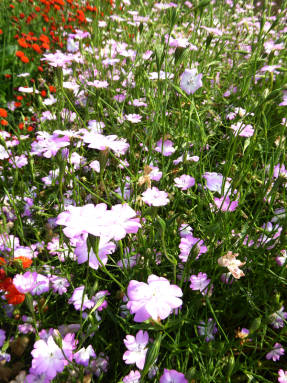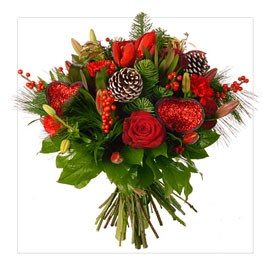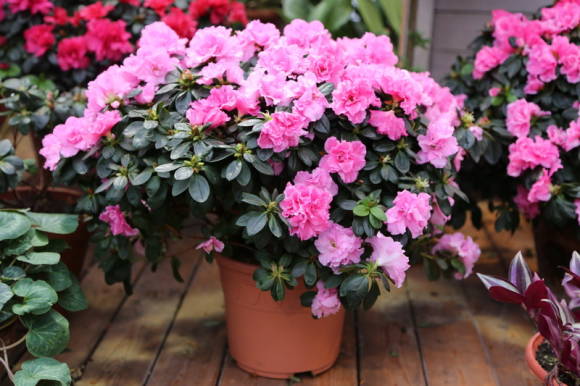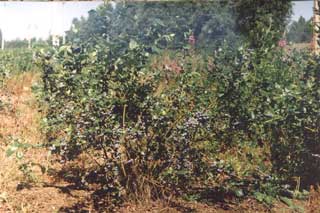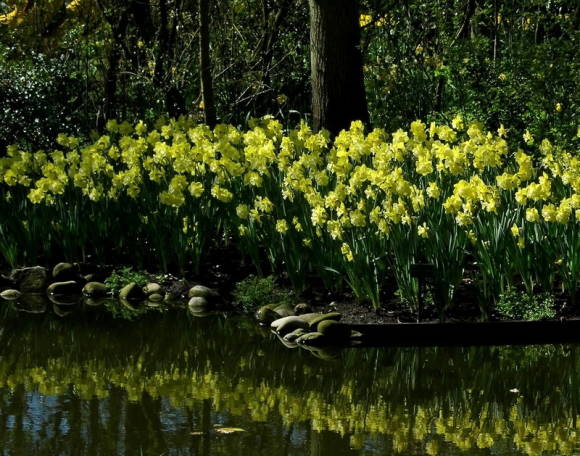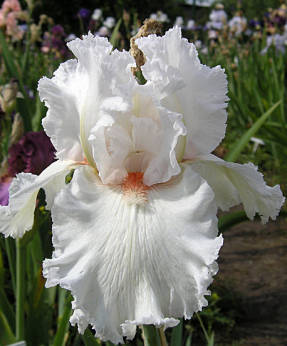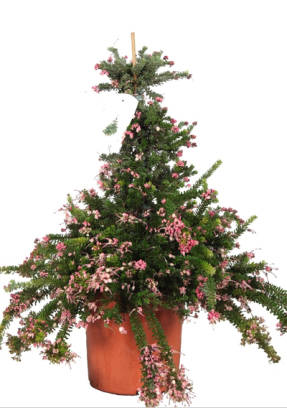A beautiful garden is the ideal habitat
First, about beauty in general, and how it saves human souls from impurity. First, beauty is an all-encompassing concept that can be applied to any area of human life. A beautiful body, a beautiful soul, a beautiful voice, a beautiful act, a beautiful house, a beautiful landscape, a beautiful car.
When it comes to the purely material world, people, as a rule, easily understand what is beautiful and what is not. Another thing is the area of human relations. There has never been a consensus here, and it may not be. Although from the point of view of an intelligent person, everything is as clear as daylight. Everything that is reasonably arranged is beautiful. Everything that is harmonious and does not harm anyone. Peacefulness is beautiful, because the world does not bring misfortune to anyone. Enmity is ugly because it is destructive. No one needs to explain, for example, what is good and what is bad (or beautiful and ugly) in such paired concepts as: Laziness and hard work. Knowledge and ignorance. Cleanliness and rubbish. Poverty and prosperity. Thrift and wastefulness. Anger and benevolence.
And now we will smoothly turn our boat towards the garden, for it is directly related to beauty. The peoples who love to cultivate the land and grow gardens are the most cultured and peaceful. And this is no coincidence. The garden pacifies the human soul. Anyone who loves to plant flowers is a peaceful, kind, patient person. And vice versa, the one who loves to scandal, fight, fight, blow up - does not like to tinker with the ground, does not like the garden. These are completely different, opposite ideas. A garden is creation, creativity, love. And scandal, fight and war are destruction.
An ornamental garden does not carry any material benefits. It refers to spiritual rather than material values. The need for a front garden, before others, arises in people with a subtle soul, because they are more sensitive than anyone else to a violation of harmony. They cannot put up with garbage, they feel discomfort from the chaos in the surrounding landscape, from the noise of cars, the stench of burning "chemistry". They need a garden, as a savior from all this, it is associated with an earthly paradise. The garden is the ideal human habitat.

Russian garden - what should and can it be?
And now a new twist - let's talk about the Russian garden.
But first, a little bit of agitprop. There is an English garden, there is a French one. There are also Japanese and Chinese. They are recognizable, they have personality. The Russian garden, if it exists at all, is still in its childhood stage. And, as in any child, other people's traits are visible in him. Simply put, we have not yet developed our own individual garden style and recklessly imitate and copy other people's gardens.
Is this good or bad? Definitely good! After all, any artist begins by getting to know the traditions. He studies the works of old masters, comprehends different styles, manners and techniques. And only then, if, of course, there are enough abilities, he develops his own handwriting.
Gardening is also an art, although very few people in Russia understand it yet. Ornamental gardening is painting, the canvas for which is soil, and the paints are living plants. Ornamental garden can be attended by “inanimate” characters - stone and water.
What should be a Russian garden? I am sure he simply must be a continuation and reflection of our northern nature. In practice, this means that the characters in it should be plants with a Russian, Nordic character. Only with frost-resistant plants can you build compositions with a maximum duration. Believe me, I am not against roses and boxwood. The presence of not winter-hardy, but very spectacular flowers, of course, is permissible and justified. But they are not supposed to rule the show in our front gardens.The basis of the northern garden should be completely winter-hardy plants from all tiers - trees, shrubs and herbaceous perennials.

Who exactly? - you ask. What are the names of these heroes! A lot of them. Each tier has its own characters, its own favorites. But there is no doubt that they all must have sufficient unpretentiousness and efficiency. The Russian Garden should not begin in May and end in September. He should not hibernate with the onset of the first frost. The garden can live during the entire snowless period. That is, from late April to early December. Moreover, the backbone of the garden must be preserved in winter.
Even 20 years ago, the above could seem like nonsense, stupid fantasy. But now, when Russians have discovered the world of conifers, this is not just possible - it is real. Yes exactly. Numerous examples of "all-season" compositions and gardens are already available not only in Holland and Germany, but also in Russia. And this despite the fact that conifers are not annuals for you - it takes at least ten years to achieve "full readiness" of a decorative coniferous composition. And this is in the event that the gardener made neither agronomic nor design mistakes - which is simply unrealistic.
So, everything is clear with conifers. A Russian garden is already unthinkable without conifers. With a wide range of varieties, they allow you to create beautiful all-season gardens. It remains only to comprehensively study and master them. But here's another catch. The Russian soul yearns for flowers. We for the most part love bright, colorful, festive gardens. I must say that conifers are by no means monochrome. Their needles can be blue, and golden, and white and variegated ... But no matter how hard you try, neither thuja, nor spruce, nor juniper will bloom, and will not show you the colors that rhododendron, rose and iris are capable of.
And here they will be helped by decorative deciduous plants with brightly colored leaves - mainly from the lower and middle tiers of the garden - that is, herbs and shrubs. In order not to be unfounded, I will name several decorative deciduous plants, using which you can create colorful and at the same time resistant to weather surprises compositions: hosts, heucheras, tenacious plants, stonecrops, Thunberg barberries, spirea, willows ...
The bladder phenomenon
And now let's move on from general words to bare specifics. Let's talk about an ornamental shrub, which, if you look closely and impartially at it, will undoubtedly have a great future. Moreover, it is here in Russia, like nowhere else, that he is destined to become a popular favorite. So, - Kalinolistny bladder (Physocarpusopulifolius) and its varieties.

The history of the bubblegum as an ornamental shrub is like a detective story in and of itself. Not so long ago, this shrub did not arouse interest in anyone. Open the most detailed reference book of the late 20th century, and there you will read as much about the bush as, for example, about the bird. Meanwhile, the bubblegum was already in demand in landscaping, and even had several decorative forms.
And suddenly! It was suddenly, that is, literally out of the blue, out of the blue, that Diabolo, the first purple-leaved variety, appeared to the world. Whether the appearance of "Diabolo" was an accident, and whether it was a sensation - this is how you look. But from the point of view of an ordinary gardener, everything looked exactly like this. The future, however, has shown that the "competent" comrades have long been secretly working with the vesicle. How else to explain the fact that after some 15 years around "Diabolo" there were already about 30 new varieties!
About varieties - in the article Calyx-leaved bilberry: varieties.

Cultivation of the bladder
All varieties of bladderwort are winter-hardy, shade-tolerant, relatively drought-resistant. At the same time, the shrub shows its best decorative qualities only in fairly comfortable conditions.
Landing site. The bubble plant copes with a slight shadow without noticeable consequences, but in order for the leaves of the bush to be painted as brightly as possible, the place of its planting must be completely open.
Soil, planting. Ideally, the soil should be both fertile and permeable, moist and drained. This corresponds to the maximum extent to medium loams with a high humus content. If you are engaged in the preparation of the substrate on purpose, then a mixture of leafy soil, humus and sand 1: 1: 2, or sod land, peat and sand 1: 2: 2 can be a good option. A planting pit with a depth and diameter of 40-50 cm is prepared for a separate bush. Trenches with the same characteristics are dug under hedges and curbs.
Care. Fertilizer.Watering. The bladder does not like the compaction of the root zone. Therefore, the soil around the bushes should be loosened and weeded regularly. It is most rational to keep the trunk circle of the shrub under mulch. As a mulching material, you can use aerated peat, peat composts, various humus. The composted leaves of such forest species as linden, maple, oak, aspen are especially good for this. The thickness of the mulching material is about 3-5 cm, it is replenished from time to time, and gradually embedded in the deep horizons of the soil. In a run-off with mulching, it is useful to make mineral fertilizing: ash - 150-200 g per m2 or / and mineral (NPK) mixture - 15-20 g per m2.
Drought in the area where the roots are located is harmful to the shrub, therefore, with a lack of atmospheric moisture, watering is indicated. In extreme heat, it should be practiced at least 2 times a week. It is advisable to water at the root, in small doses, but more often than vice versa.
The holiday comes to us!
The bubble plant is not a rival to either the lilac or the mock-orange. He also does not encroach on the niches occupied by the rose and rhododendron. They have different roles in the ornamental garden. The bubblegum does not strike with the brightness of flowering. He is not a hero-lover, he has a different role. But he is not a supporting actor either. Rather, he is both a decoration and an extra. And this is something without which harmony cannot be achieved in the garden.
If you want to really make friends with the bubblegum, buy a bush clipper and learn how to cut it. And then you will have endless possibilities that this shrub keeps under wraps. After all, it's not a secret for anyone that any ornamental plant has two means of influencing the viewer - color and shape. And since the colors of the bubblegum are more than enough, then by shaping and cutting its crown in different ways, you can achieve the most unexpected and effective solutions.

Geometric hedge and bladder border. A trimmed hedge is one of the most sophisticated elements of garden design. Moreover, hedges are equally desirable in a private garden and in public landscaping. Fences are especially organic in the landscaping of modern city courtyards. After all, a geometrically correct hedge, like nothing else, is in harmony with the architecture of a human dwelling. In addition, the reality is that in city courtyards there is practically no room for such large trees as birch, maple, oak, etc. For me - these woody Gargantua already initially appeared in our yards through a misunderstanding - solely because it was not landscape specialists who were involved in landscaping, but whoever. Now, when the courtyards are occupied by cars, there is a need for radical changes in their tree and shrub design.
The bladder, like no other, meets the modern requirements for urban shrubs. Bubble varieties allow you to create hedges from very high (150-180 cm) (variety "Diabolo", etc.), to very low (30-50 cm) borders ("Little Devil", "Little Angel", "Little Red Joker" ).
A hedge, if it is higher than the height of human eyes (that is, above 170 cm), transforms perspective and creates a sense of isolation. Such a hedge can have an independent meaning if, for example, it is to enclose the territory of a yard or garden plot. On the very territory of the courtyard, using hedges, you can create "green offices" and U-shaped niches for secluded relaxation.Fences can be used to ring a playground or a playground for teenagers.
But the use of the border can be especially varied. The border, like a baguette framing the picture, gives completeness and splendor to any decorative composition. He brings order with him, and by this he teaches the residents of urban high-rise buildings to be neat. The entire yard area can be “lined” with borders 40-60 cm high: designate parking places, emphasize the lines of paths, ring individual decorative compositions ... And, finally, you can create ornamental border arabesque flower beds from the bubble plant - and this is possible! And this only at first glance requires some kind of special design talent from the gardener. In fact, all you need is: draw a sketch on graph paper; transfer to scale to the ground; plant the seedlings of the bladderwort every 20-50 cm (depending on the variety); to grow them up another year.
And then - cut your hair and cut your hair.
Topiary compositions and gardens. Mixed compositions based on combinations of color and shape. Topiary - means curly hair. This is not to say that the vesicle was born for a curly haircut. In this matter, he certainly loses to the generally recognized stars of the topiary garden - boxwood and yew. But the bladder has something that neither box nor yew has - that is, again, brightness. And the most important thing is winter hardiness.
You can cut the bladder in different ways. Here's what a beginner should understand:
- If you have planned to cut it in the form of a squat "product" (hemisphere, pillow, parallelepiped), then the cut should be started with "planting on a stump", that is, with cutting off all the shrub trunks at a height of 15-20 cm. Then, as young shoots grow back , the shrub is given its final shape.
- If you intend to form a vertical crown on the bubble, then first let it grow 2/3 of its height, and only then cut.
- So that the crowns of the bushes are dense enough, and the foliage is dense, topiary compositions should be placed in the open sun; and between the individual objects of the haircut for good insolation, you need to leave gaps.
By combining different haircut options, you can plant the entire yard with just one bubblegrowth. And such "mono greening" will not be monotonous at all. And if you add the blue columns of rocky juniper ("Sky Rocket", "Blue Arrow") and emerald cones of "Conic" spruce to the vesicle, then your yard will become, neither give nor take - a branch of Versailles. And who will refuse the royal life!
And most importantly, all this luxury, contrary to expectations and to everyone's surprise, turns out to be not only easy to maintain, but also inexpensive. After all, if the seedlings are bought young (in P9 containers), then they cost no more than the seedlings of the summer season. This is despite the fact that the amortization period of the shrub exceeds three decades. As for the hairstyle, with the current gardening equipment (petrol cutter), with the running kilometer of the curb (and this is oh-oh-oh how much !!), the only gardener can handle it without straining at all. Moreover, among the residents of the yard there are many volunteers willing to do this work manually and free of charge. By the way, cutting bushes is a great exercise for the hands, and effective psychotherapy is relaxing and soothing.

And finally ...
So, you met a bush, which professionals predict one of the first three lines in the popularity rating among Russians. He already has a fairly diverse assortment, and he can handle a lot. With it, you can create bright, diverse compositions that do not require large labor costs, durable, reliable and inexpensive. He alone is able to bring the brightness of flowers and splendor of sheared boxwood to your garden. All that remains is to learn how to work with it. And the sooner you invite him, the better it will be for you and your garden.
And we will help you with the planting material.
Plants for the garden by mail
Shipping experience in Russia since 1995.
Catalog in your envelope or on the website.
600028, m.Vladimir, 24 passage, 12
Smirnov Alexander Dmitrievich
Email: [email protected]
Tel. 8 (909) 273-78-63
Online store on the site www.vladgarden.ru
